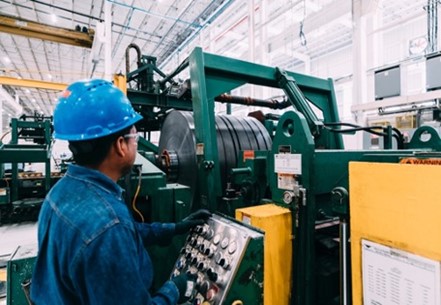When a Steel Distributor Does More Than Distribute Steel
Steel distributor drive the evolution of the American steel industry, a key force behind the nation’s industrial growth and innovation. By the early 20th century, the U.S. led global steel production, fueled by rich iron ore deposits, coal veins, and strategic water routes. As the industry progressed, steel distributors and service centers took on vital roles, ensuring a steady supply of high-quality products.
Whether you are an OEM looking for steel and aluminum solutions or a stakeholder in the metal industry, this blog will enhance your understanding and showcase the multifaceted capabilities of leading steel service providers.
Steel Distributor: The Foundation of the Supply Chain
As essential pillars of North America’s industrial landscape, steel distributors drive growth and sustainability. By linking steel mills with end-users, they ensure a steady flow of steel products, which in turn fuels industrial development and strengthens economic progress.
These distributors serve a diverse array of industries, including construction, automotive, agriculture, and manufacturing. Their products are vital for structural engineering, machinery production, and infrastructure development, making them indispensable to the success of these sectors.
The Benefits of a North American Steel Distributor
Efficient supply chain management
By streamlining the flow of steel products to diverse industries, steel distributors enhance supply chain efficiency. They act as a crucial link between steel mills and end-users, making the supply chain more responsive and effective.
Wide range of products
A steel distributor provides a broad selection of steel products designed to meet the specific needs of various industries. This variety helps businesses find the exact materials required for their applications, boosting efficiency and ensuring they have the right steel for every job.
Local accessibility
Strategically located steel distributors across various regions make it easier for businesses to access steel materials promptly. This local presence helps reduce transportation costs and delays, ensuring timely delivery.
Quality assurance
Reputable steel distributors uphold rigorous quality control standards, ensuring the steel they supply meets the required specifications. This quality assurance is critical for industries that demand high-quality steel for their operations, guaranteeing reliability and performance.
While steel distributors are foundational to the supply chain, steel service centers elevate the process by offering critical value-added services.
Beyond Distribution: The Steel Service Center Advantage A steel service center is a critical intermediary between producers, distributors, and end consumers. These centers offer enhanced steel services such as steel cutting, slitting, and shaping steel products according to precise customer specifications, essential in steel supply chain management.
By providing tailored solutions, steel service centers ensure businesses receive the materials needed for their projects, optimizing efficiency and minimizing waste. They strongly emphasize precision and customization, utilizing advanced machinery and techniques to perform coil parting, slitting, and cut-to-length operations. This capability allows for customizing steel sizes and shapes catering to diverse project requirements.

 […]
[…]